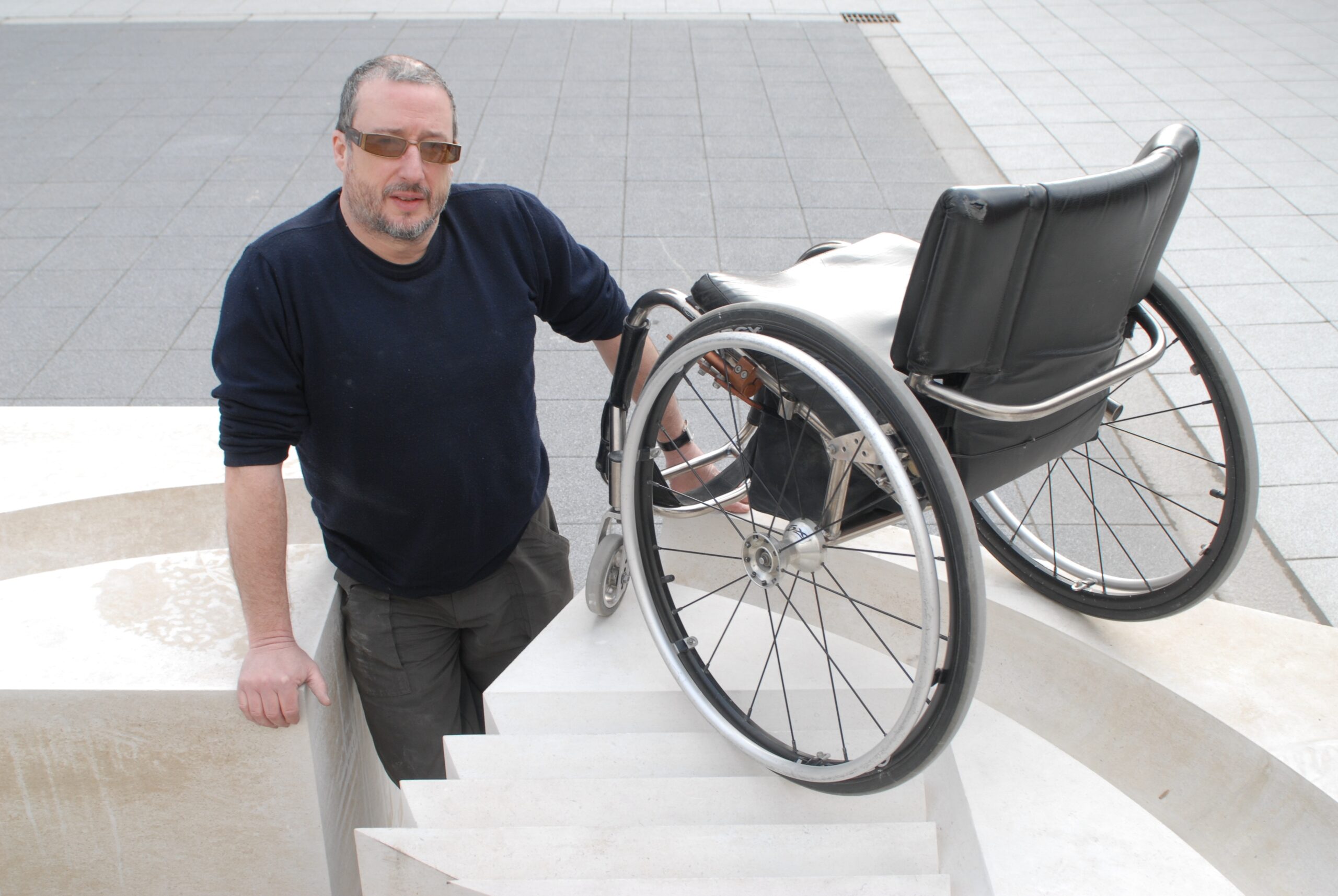
A slow journey
Tony Heaton reflects on how far we have come to make arts buildings accessible to all.
It is still taking a very long time but there is a widening understanding among those in power and control that making buildings and the activity that takes place within those buildings accessible to disabled people is a duty, not a concession. This has been helped over the years by legislation and by various public funders who stipulate a thought-through access plan as a condition of offering a grant.
It is also worth remembering that none of this would have happened without grassroots disability rights activism stretching back for over 40 years and the occasional well positioned ‘crip’ and lone voice on the boards of these august funding bodies. Conversations with one such voice, the late Paddy Masefield, return to my memory.
Good access should also be seen as an economic imperative
I was reminded recently of this slow journey when I was looking through the Shape archive of materials, getting our house in order following a significant grant from the Heritage Lottery Fund to help us develop the National Disability Arts Collection and Archive. Black and white photographs of wheelchair-users being hauled up wooden boards set at improbable angles into theatres by the muscle-bound, images from the innovative Shape Tickets Scheme from over thirty years ago.
A recent visit to the opening of the Backstage Centre, home to Creative and Cultural Skills at Purfleet in Essex, was reassuring. Gary Sparkes very proudly pointed out the accessible dressing rooms and showers, as well as the flexible lighting rigs and technical side of the facilities. It was impressive and an acknowledgement that disabled people are not just consumers of culture but also performers, participants and potential employees, and that there has to be a positive and fully understood strategy to inclusion.
Last year was significant in that alongside the Paralympics the Unlimited Festival took place; many of the artists’ commissions were featured in the Royal Festival Hall and it was a great privilege for Shape to work with funders LOCOG, Arts Council of England and the Southbank Centre in supporting this initiative. It attracted record numbers of disabled people to the Southbank and it tested access provision but it also gave us all much intelligence. These lessons are critical, particularly as both the Southbank Centre and its neighbour the Royal National Theatre are now embarking on very ambitious architectural development schemes, as is Tate Modern further east. This is great news for the whole of the Southbank which currently offers a good degree of physical access along the river and is home to many of the cultural landmarks of London. But it is essential that they get access provision absolutely right, that inclusion is fully immersed in every aspect of the planning and design rather than a 'bolted-on' afterthought which is not satisfactory for anyone and a constant reminder to all for years to come of architectural failure.
Planners, architects and designers need constant training in the reality rather than the theory of good access. This means a wide and ongoing consultation with disabled people and organisations like Shape who can offer information, advice and guidance. Many of the disabling aspects of our lives are created by lazy, ignorant and ill-thought-through design, and when this is imposed it is a very difficult to resolve.
Good access should also be seen as an economic imperative. Not only is it right that disabled people should have equal inclusion in the cultural life of the country, but we also add to the cultural diversity, we create art that often swims away from the mainstream and is therefore more interesting as a result of it, and we spend money and bring our families and friends to do the same. We are also faithful good advocates of those buildings and institutions that make us welcome and that makes good business sense, particularly in these austere times.
In hard times it is imperative that we make the most of our buildings; empty buildings can be the receptacle for art in all its forms and create surprise and delight in unexpected places. If you visit Shape in the City, our fully accessible 'pop-up' gallery at 40 Gracechurch Street in the City of London, in addition to seeing over 140 artworks by 30 artists you will come across a sign by artist Caroline Cardus which states: 'Man on the Moon, 1969, full access to public transport, 2025'. This is a somewhat cynical but accurate reminder that accessible buildings are only part of the wider infrastructure required to provide the kind of access that the non-disabled take for granted.
Tony Heaton is Director of Shape.
Join the Discussion
You must be logged in to post a comment.